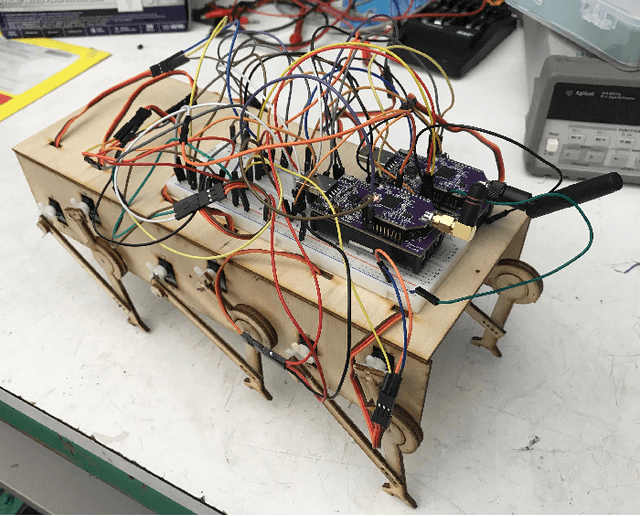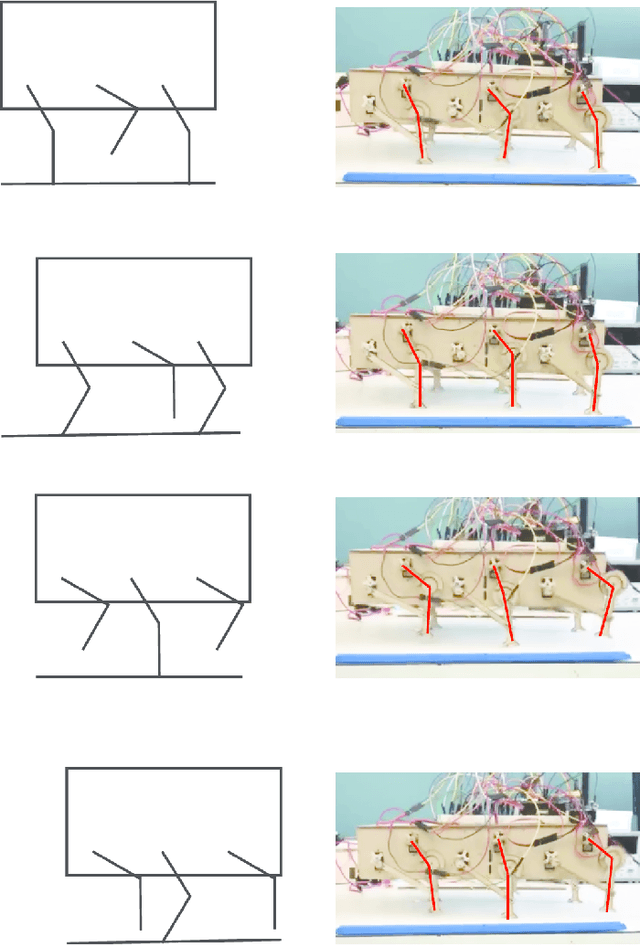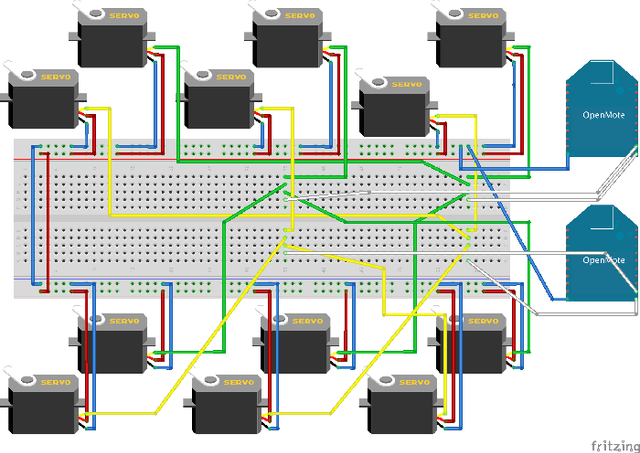Decentralized Control of a Hexapod Robot Using a Wireless Time Synchronized Network
Paper and Code
Aug 23, 2018



Robots and control systems rely upon precise timing of sensors and actuators in order to operate intelligently. We present a functioning hexapod robot that walks with a dual tripod gait; each tripod is actuated using its own local controller running on a separate wireless node. We compare and report the results of operating the robot using two different decentralized control schemes. With the first scheme, each controller relies on its own local clock to generate control signals for the tripod it controls. With the second scheme, each controller relies on a variable that is local to itself but that is necessarily the same across controllers as a by-product of their host nodes being part of a time synchronized IEEE802.15.4e network. The gait synchronization error (time difference between what both controllers believe is the start of the gait period) grows linearly when the controllers use their local clocks, but remains bounded to within 112 microseconds when the controllers use their nodes' time synchronized local variable.
 Add to Chrome
Add to Chrome Add to Firefox
Add to Firefox Add to Edge
Add to Edge